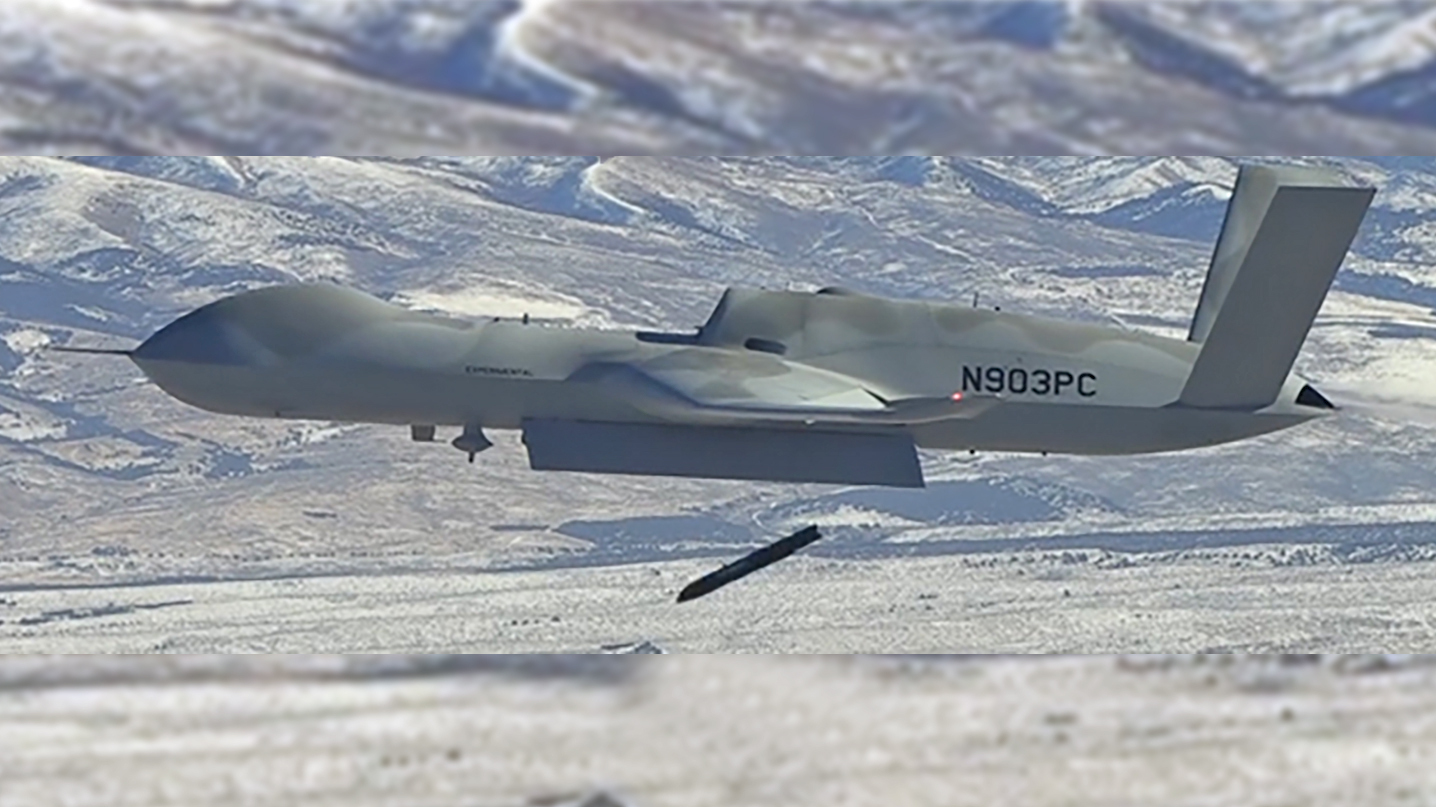General Atomics Aeronautical Systems, Inc. (GA-ASI), has revealed that it has developed, built, and in-flight released a brand new and hitherto unknown small uncrewed aerial system (SUAS) as the Advanced Air-Launched Effects (A2LE). Shown in new images released by the manufacturer, the new A2LE is seen being deployed from the internal weapons bay of a company-owned MQ-20 Avenger drone.
The A2LE demonstration took place on November 28, 2023, over the Dugway Proving Ground, Utah, under a manufacturing, structural test, and flight demonstration effort. “This demonstration was a crucial first step in demonstrating GA-ASI’s ability to rapidly develop, manufacture, and test a Small Unmanned Aircraft System in a controlled, low-risk approach,” said Mike Atwood, vice president of Advanced Programs at GA-ASI.
General Atomics says it partnered with Divergent Technologies for the A2LE vehicle design and construction, using the Divergent Adaptive Production System (DAPS) to support rapid, low-cost manufacturing of the demonstration air vehicle. DAPS is a highly automated “digital factory” concept that includes software and hardware elements and was originally developed for manufacturing automotive components. Using the system as part of the A2LE project is aimed at helping to create small uncrewed air vehicles that can be tailored to meet particular needs at a fraction of the cost and lead time of currently fielded systems.
The A2LE airframe was designed to suit the ejection loads associated with launching from the jet-powered MQ-20’s internal weapons bay, and its structure was validated via proof and pit ejection testing prior to the flight demonstration, according to a GA-ASI media release.
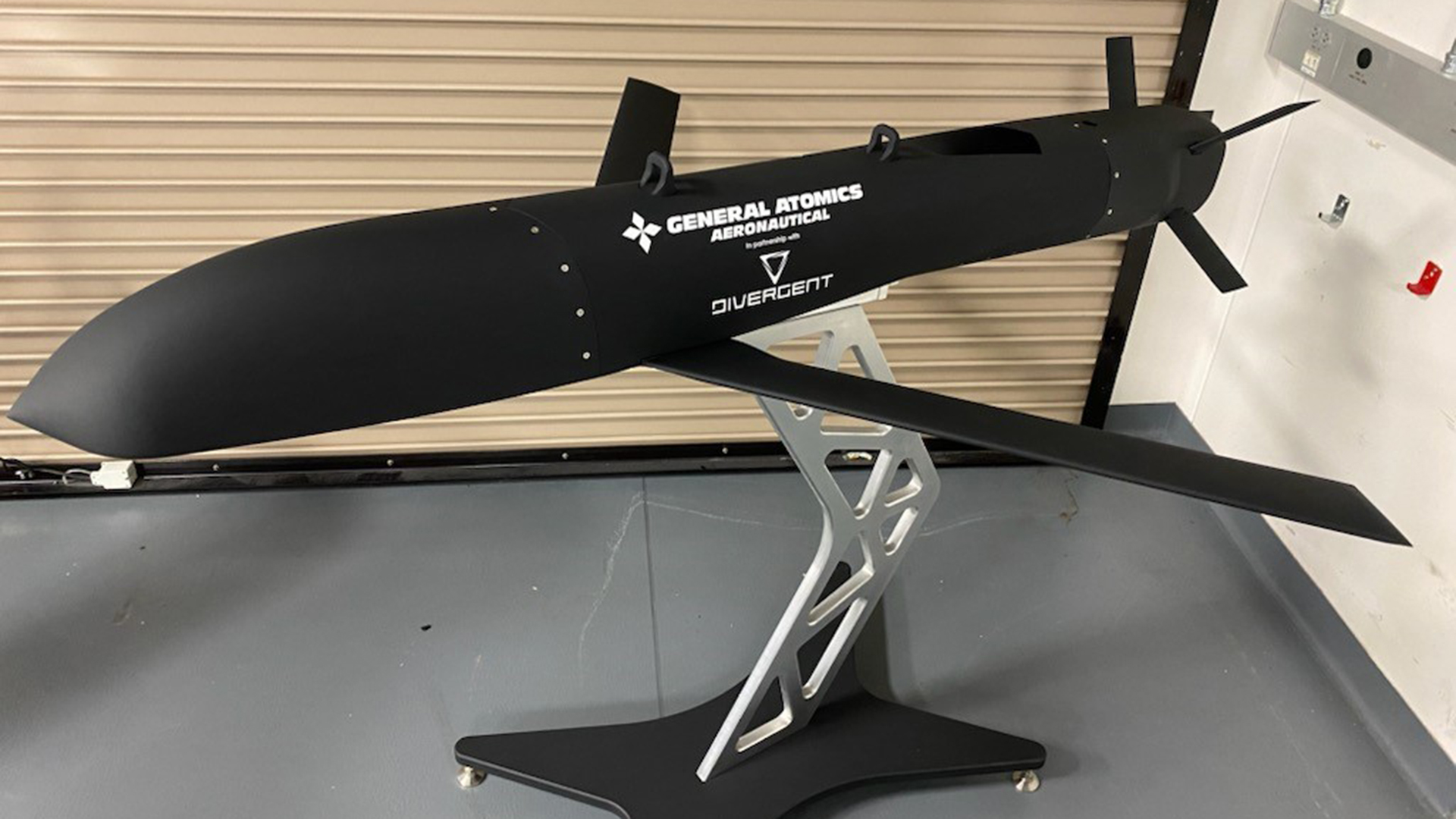
“The idea of unmanned aircraft carrying unmanned aircraft for Air Launched Effects has really become a concept to achieve stand-off survivability and achieve a penetrating capability at the same time,” General Atomics’ President David R. Alexander told The War Zone. “[With] Advanced Air-Launched Effects we are doing some revolutionary teaming with Divergent Technologies.”
“We’re using Additive Manufacturing of metal airframe parts and we can print a complex metal airframe where you would previously have had many parts fabricated separately. We print them all together in one shot, which gives you the economy of scale and the ability to ramp up [production] super quick,” added Alexander.
The ability to swiftly design and fabricate new air vehicles to meet emerging requirements in a cost-effective manner is a capability that cannot be understated. Manufacturers and customers have traditionally had to sink huge sums of money into the hardware associated with individual programs, limiting the ability to create new bespoke platforms for new roles. Moreover, the ability to effectively “print” airframes as required could enable a far more reactive and versatile approach to procurement.
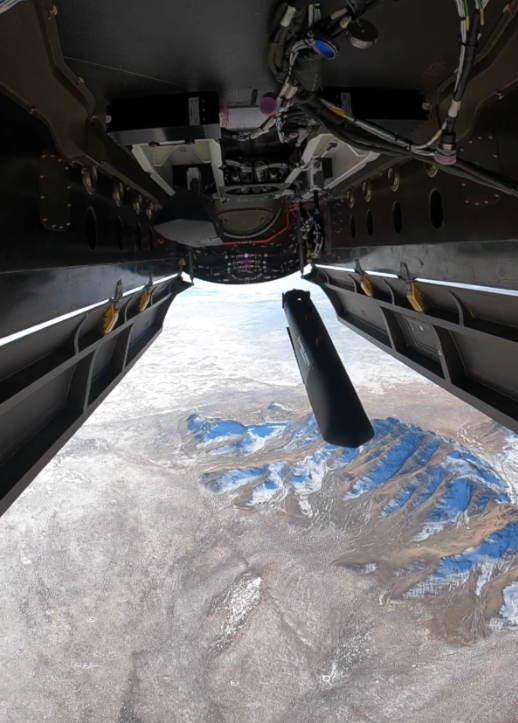
General Atomics says the A2LE includes modular payload options. The company believes that a network of A2LEs could create a persistent, expansive grid for surveillance, attack, enemy air defense suppression, or communication pathways, supporting and elevating capabilities of current and future manned or unmanned platforms.
“Our perspective on Air Launched Effects [ALEs] is around the ability to provide a stand-in capability for stand-off platforms,” said Patrick “Mike” Shortsleeve, Vice President of DoD Strategic Development at General Atomics. “Perhaps it’s platforms that you don’t want to risk, or maybe that are operating on the fringes of contested airspace, that you don’t want to put in harm’s way but want additional data collecting capability or perhaps jamming effects, whatever the desired mission might be. For General Atomics, our intent is to create options for aircrews, commanders, etc., to have these kinds of capabilities potentially inside that highly-contested environment.”
“Our philosophy behind this is about needing the range to get into the contested area when you’re pushed out by threats, so maybe you’re looking at a larger actual system to get into the target set, and additionally have the persistence to remain in there. The very small first-person-view type of UAS’ are good along the front line of battle, but if you’re trying to do deeper sensing beyond that front line, particularly in a vast region such as the Pacific, you’re going to need something that requires a little more range and probably multiple sensing capabilities, so you’re into the larger-size small UAS’ — probably in the the 500 pounds range.”
“One of the services is very interested in employing large quantities of ALEs,” Shortsleeve continued. “At GA-ASI we talk about a family of systems to meet these tasks. A2LE is a different element of that family of systems that we think are going to be required. We have demonstrated the ability to air-launch this particular form factor of an ALE.”
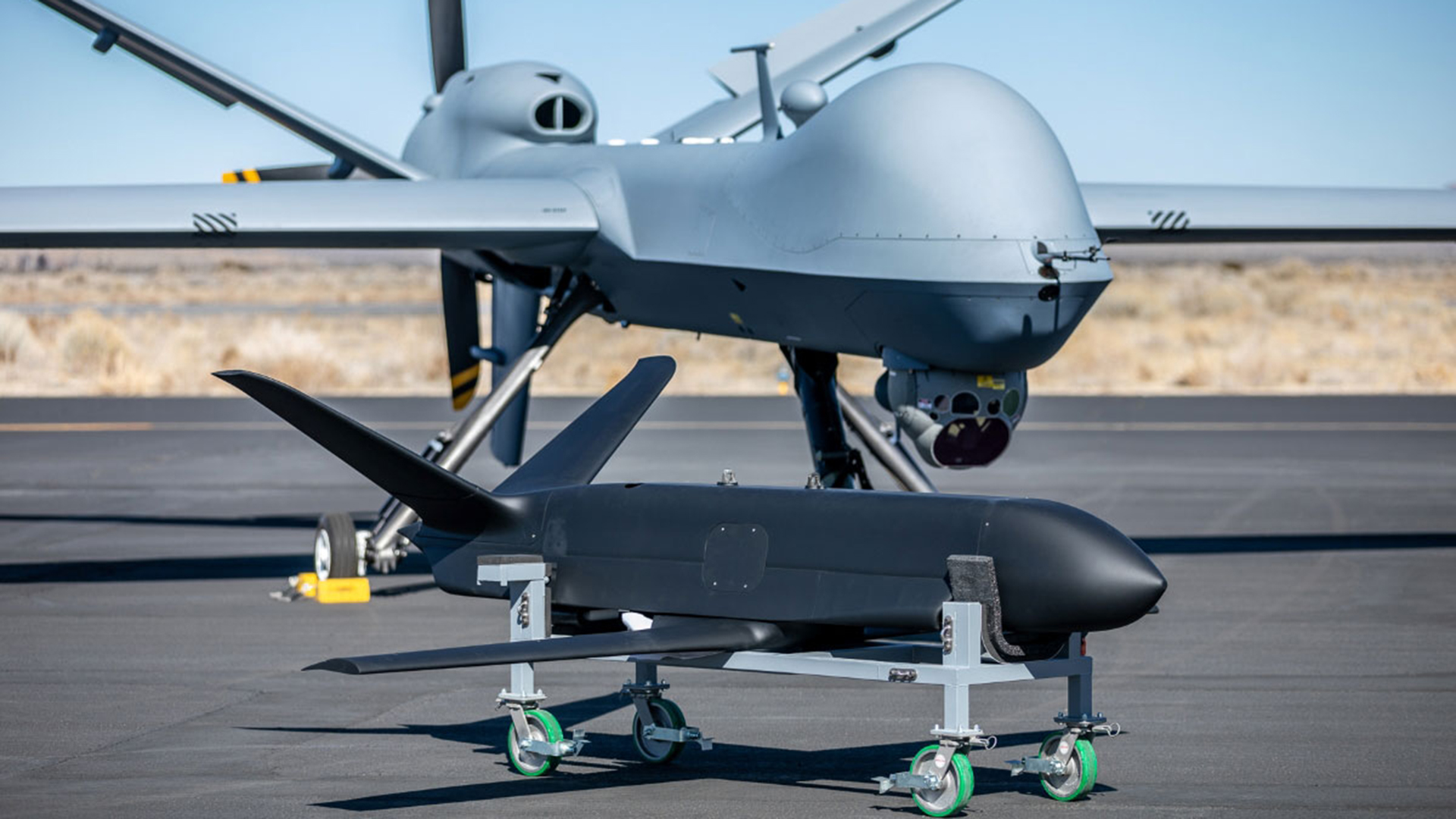
“A2LE went from concept to aerial demonstration very quickly. We rapidly designed, developed, used additive manufacturing, and tested this brand new system in a really short period of time,” said Shortsleeve.
The process is all about getting new systems from concept into production in a rapid fashion. The idea is that this ease of production can be extrapolated, resulting in highly efficient higher-rate output of relatively complex systems. This is something that is very much becoming a top trend surrounding the design and production of uncrewed aircraft. Different companies are putting forward plans to achieve this that could have their own unique strengths and weaknesses.
The U.S. military is looking to accelerate these developments. A prime example of this is the Department of Defense’s Replicator initiative, which has the primary goal of finding ways to help field thousands of highly autonomous uncrewed systems across multiple domains in the next two years or so. The Pentagon has now chosen an initial tranche of programs to be part of the Replicator push and the Pentagon is now looking into how it can speed them up.
For GA-ASI, A2LE reflects its own push in recent years to develop new smaller drones, with a focus on air-launchable and/or recoverable types. The company has two other such designs, Eaglet and Sparrowhawk, in development that we know about already.

The U.S. Army’s interest in what it has previously been described as a future family of Air Launched Effects (ALE) has been a particular driver in GA-ASI’s work. The service now refers to these simply as Launched Effects, reflecting the fact that some are likely to be deployed from dismounted launchers on the ground or from vehicles.
Eaglet is currently being developed under a contract with the U.S. Army Combat Capabilities Development Army Research Laboratory and Aviation & Missile Center, for a Launched Effect that could be specifically employed by its MQ-1C Gray Eagles. Eaglet sports low observable features that would increase its survivability and enhance its ability to operate in complex contested environments.
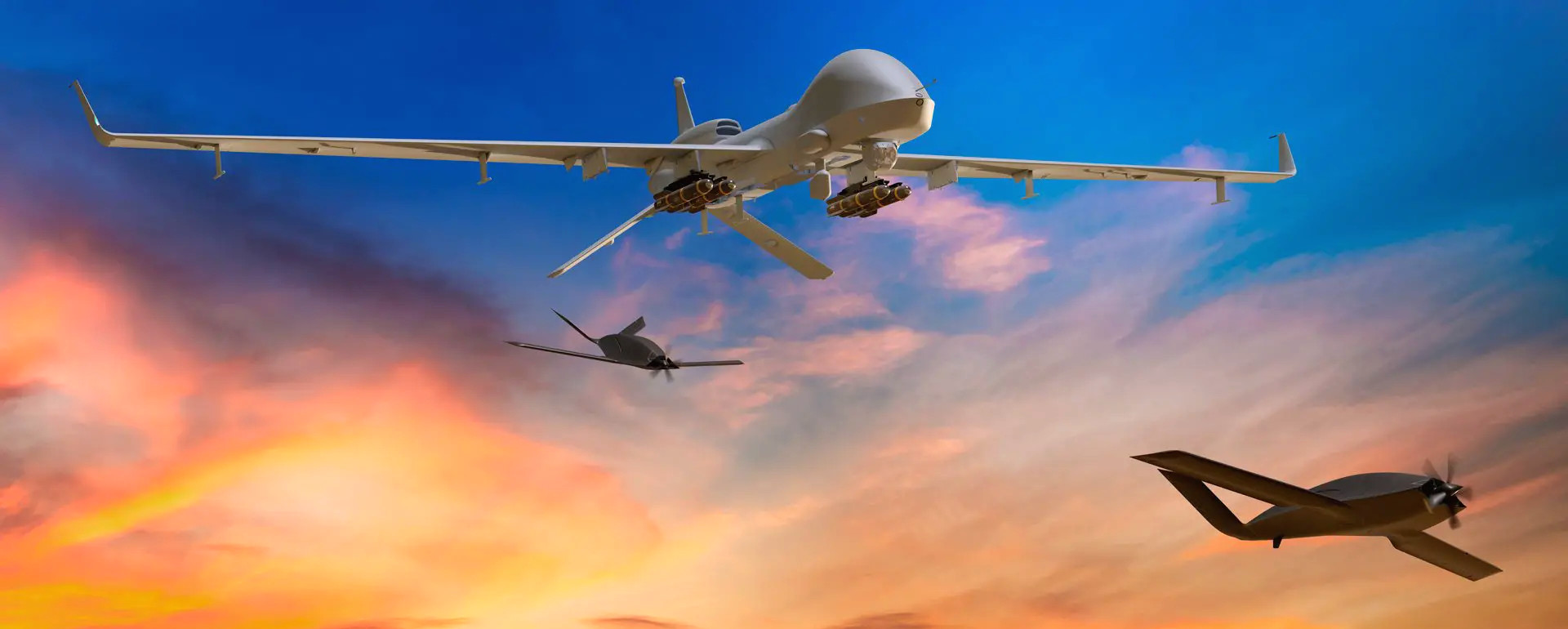
Sparrowhawk on the other hand “is an internal General Atomics research and development effort for an air launched and air recoverable UAS,” explained Shortsleeve. “We wanted a system that can carry more sensors, and have longer persistence, so you’re talking about a larger-size small-UAS. You have to look at the cost-benefit analysis — is it attritable and expendable — and Sparrowhawk’s is at the attritable end of that, in that you can lose it if you need to, but you really want to get it back because you have a greater number of high-end sensors in it.”
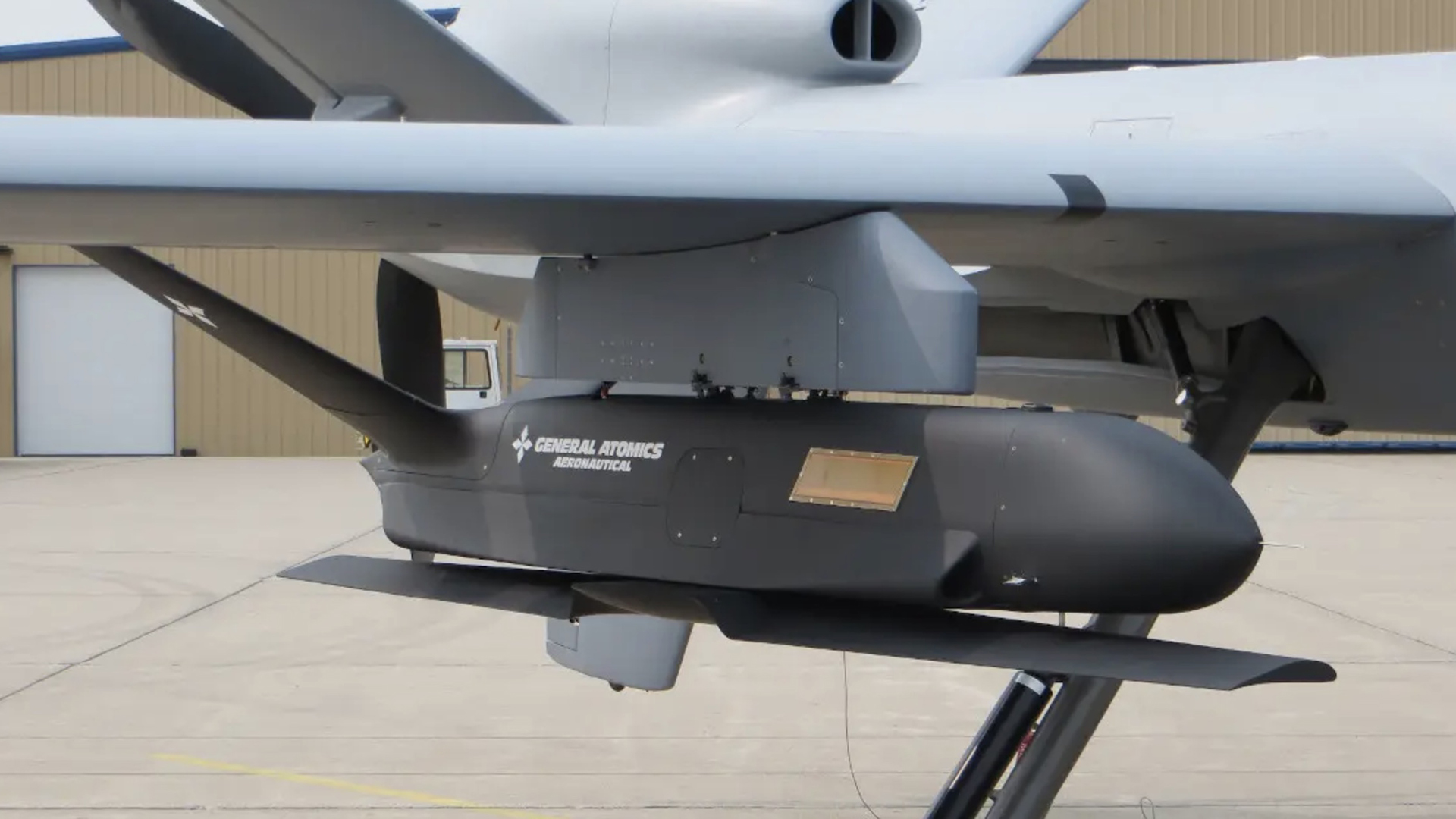
The desire to make Sparrowhawk reusable led to plans to design the system to be recoverable in flight, which you can read more about here. “We’ve done internal laboratory work and last Fall did some demonstrations with a hoist that was fitted to our Avenger aircraft to demonstrate the ability to actually catch something in flight on the cable with a smart capture feature. We have also captive-carried Sparrowhawk on an MQ-9 for certifications, and we are in a natural progression towards a demonstration of dropping and ultimately recapturing the system. Sparrowhawk has high interest from a couple of the services for stand-in collection,” said Shortsleeve. Unlike Sparrowhawk, the new A2LE is not expected to be air-recoverable.

The U.S. military is now broadly partnering with industry to develop diverse families of these kinds of air-launched, semi-autonomous, uncrewed craft. They are intended to operate primarily under human supervision and are designed to undertake a multitude of diverse tasks.
The systems will include varying levels of autonomy — in some cases, they will be able to operate as a mesh-networked swarm to provide extremely adaptable and persistent combat mass at a far lower cost than traditional platforms. Some will have longer reach than others, and some might be equipped for stand-in electronic warfare jamming, while others conduct intelligence, surveillance, and reconnaissance (ISR) functions, or are able to tackle a threat at its source as a kinetic weapon when armed with a warhead. Some might also act as decoys to disrupt and confuse enemy-integrated air defenses, which could drastically increase the survivability of the launch platform and offer safe pathways and enhanced situational awareness for manned and unmanned aircraft.

General Atomics’ new A2LE, as well as its Sparrowhawk and Eaglet, could ultimately be called upon to operate in these networked, fully autonomous swarms, each sporting different payloads to tackle a range of missions inside or very near contested airspace, while their host platform stands off at a safe distance.
These important developments are a means to ensure platforms such as the MQ-9 Reaper, the next generation of unmanned combat air vehicles, manned fixed-wing combat aircraft, and even cruise missiles and other weapons, are survivable, even in the most inhospitable of future air battles.
Perhaps more important is the new method behind creating these new families of systems in that they are produced quickly and efficiently; with the ability to directly respond to specific emerging requirements and quickly generate a mass of systems as and when required.
Contact the editor: tyler@thewarzone.com
